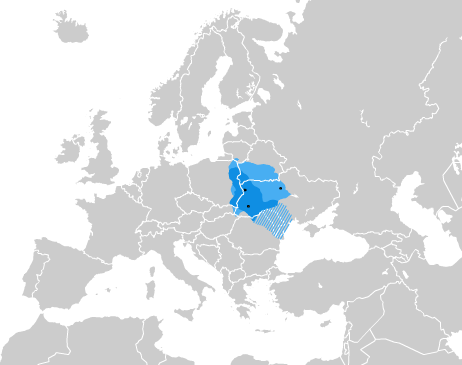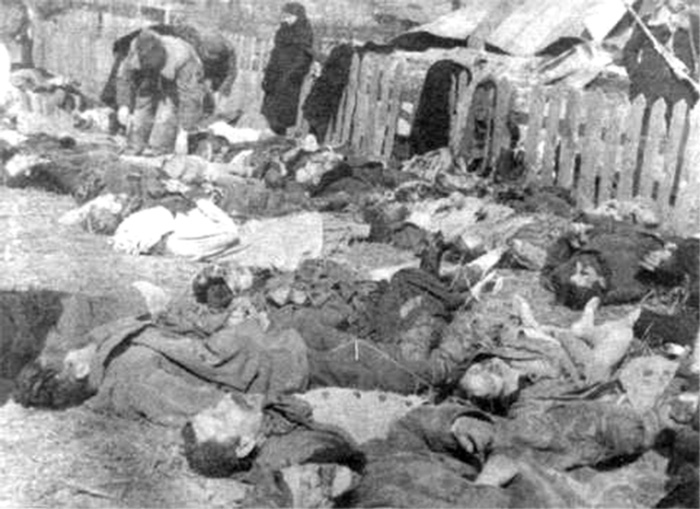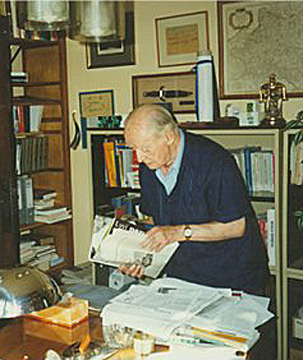|
The Reconstruction Of Nations
''The Reconstruction of Nations: Poland, Ukraine, Lithuania, Belarus, 1569–1999'' is a 2003 book by Timothy Snyder and published by the Yale University Press. It focuses on the last few hundred years of history of several Central and Eastern European countries; in particular, states descended from the Polish–Lithuanian Commonwealth, once the largest state of early modern Europe: Poland, Ukraine, Lithuania and Belarus. The book is concerned with the emergence of those modern states through the troubled history of that region, which included wars and ethnic cleansing, and concludes that national reconciliation and good neighbourly relations are possible even after such difficult events. Contents According to Brian Porter, the key question considered by Snyder in this work is "When do nations arise, what brings ethnic cleansing, how can states reconcile?". Theodore R. Weeks puts it even more simply as "What are nations and how do they arise?". The book traces the emergence of ... [...More Info...] [...Related Items...] OR: [Wikipedia] [Google] [Baidu] |
Timothy Snyder
Timothy David Snyder (born August 18, 1969) is an American historian specializing in the history of Central Europe, Central and Eastern Europe, the Soviet Union, and the Holocaust. He is on leave from his position as the Richard C. Levin, Richard C. Levin Professor of History at Yale University (as of 2025), with plans to transfer to the University of Toronto for an indefinite time. He is a permanent fellow at the Institute for Human Sciences in Vienna. Snyder serves on the Committee on Conscience of the United States Holocaust Memorial Museum, and he is a member of the Council on Foreign Relations. He holds the inaugural Chair in Modern European History, supported by the Temerty Endowment for Ukrainian Studies, at the Munk School at the University of Toronto; he will teach at the school during the 2025–26 academic year. Snyder has written many books, including ''Bloodlands, Bloodlands: Europe Between Hitler and Stalin'' (2010), ''On Tyranny: Twenty Lessons from the Twentieth ... [...More Info...] [...Related Items...] OR: [Wikipedia] [Google] [Baidu] |
Western Ukraine
Western Ukraine or West Ukraine (, ) refers to the western territories of Ukraine. There is no universally accepted definition of the territory's boundaries, but the contemporary Ukrainian administrative regions ( oblasts) of Chernivtsi, Ivano-Frankivsk, Lviv, Ternopil and Zakarpattia (which were part of the former Austro-Hungarian Empire) are typically included. In addition, Volyn and Rivne oblasts (parts of the territory annexed from the Polish–Lithuanian Commonwealth during its Third Partition) are also usually included. In modern sources, Khmelnytskyi Oblast is often included because of its geographical, linguistic and cultural association with Western Ukraine, although this can not be confirmed from a historical and political point of view. It includes several historical regions such as Carpathian Ruthenia, Halychyna including Pokuttia (the eastern portion of Eastern Galicia), most of Volhynia, northern Bukovina and the Hertsa region, and Podolia. Western Ukraine ... [...More Info...] [...Related Items...] OR: [Wikipedia] [Google] [Baidu] |
Polish Population Transfers (1944–1946)
Polish may refer to: * Anything from or related to Poland, a country in Europe * Polish language * Polish people, people from Poland or of Polish descent * Polish chicken * Polish brothers (Mark Polish and Michael Polish, born 1970), American twin screenwriters * Kevin Polish, an American Paralympian archer Polish may refer to: * Polishing, the process of creating a smooth and shiny surface by rubbing or chemical action ** French polishing, polishing wood to a high gloss finish * Nail polish * Shoe polish * Polish (screenwriting), improving a script in smaller ways than in a rewrite See also * * * Polishchuk (surname) * Polonaise (other) A polonaise ()) is a stately dance of Polish origin or a piece of music for this dance. Polonaise may also refer to: * Polonaises (Chopin), compositions by Frédéric Chopin ** Polonaise in A-flat major, Op. 53 (, ''Heroic Polonaise''; ) * Polon ... {{Disambiguation, surname Language and nationality disambiguation pages ... [...More Info...] [...Related Items...] OR: [Wikipedia] [Google] [Baidu] |
The Holocaust
The Holocaust (), known in Hebrew language, Hebrew as the (), was the genocide of History of the Jews in Europe, European Jews during World War II. From 1941 to 1945, Nazi Germany and Collaboration with Nazi Germany and Fascist Italy, its collaborators systematically murdered some six million Jews across German-occupied Europe, around two-thirds of Europe's Jewish population. The murders were carried out primarily through mass shootings and poison gas in extermination camps, chiefly Auschwitz concentration camp#Auschwitz II-Birkenau, Auschwitz-Birkenau, Treblinka extermination camp, Treblinka, Belzec extermination camp, Belzec, Sobibor extermination camp, Sobibor, and Chełmno extermination camp, Chełmno in Occupation of Poland (1939–1945), occupied Poland. Separate Nazi persecutions killed a similar or larger number of non-Jewish civilians and prisoners of war (POWs); the term ''Holocaust'' is sometimes used to include the murder and persecution of Victims of Nazi ... [...More Info...] [...Related Items...] OR: [Wikipedia] [Google] [Baidu] |
Massacres Of Poles In Volhynia And Eastern Galicia
The Massacres of Poles in Volhynia and Eastern Galicia (; ) were carried out in Occupation of Poland (1939–1945), German-occupied Poland by the Ukrainian Insurgent Army (UPA), with the support of parts of the local Ukrainians, Ukrainian population, against the Polish people, Polish minority in Volhynia, Eastern Galicia, parts of Polesia, and the Lublin Voivodeship, Lublin region from 1943 to 1945. The UPA's actions resulted in up to 100,000 Polish deaths. The peak of the massacres took place in July and August 1943. These killings were exceptionally brutal, and most of the victims were women and children. Other victims of the massacres included several hundred Armenians, Jews, Russians, Czechs, Georgians, and Ukrainians who were part of Polish families or opposed the UPA and impeded the massacres by hiding Polish escapees. The ethnic cleansing was a Ukrainian attempt to prevent the post-war Polish state from asserting its sovereignty over Ukrainian-majority areas that had be ... [...More Info...] [...Related Items...] OR: [Wikipedia] [Google] [Baidu] |
Lithuanization
Lithuanization (or Lithuanianization) is a process of cultural assimilation, where Lithuanian culture or its language is voluntarily or forcibly adopted. History The Lithuanian annexation of Ruthenian lands between the 13th and 15th centuries was accompanied by some Lithuanization. A large part of the Grand Duchy of Lithuania remained Ruthenian; due to religious, linguistic and cultural dissimilarity, there was less assimilation between the ruling nobility of the pagan Lithuanians and the conquered Orthodox East Slavs. After the military and diplomatic expansion of the duchy into Ruthenian (Kievan Rus') lands, local leaders retained autonomy which limited the amalgamation of cultures. When some localities received appointed Gediminids (rulers), the Lithuanian nobility in Ruthenia largely embraced Slavic customs and Orthodox Christianity and became indistinguishable from Ruthenian nobility. The cultures merged; many upper-class Ruthenians merged with the Lithuanian nobility and be ... [...More Info...] [...Related Items...] OR: [Wikipedia] [Google] [Baidu] |
Cultural Assimilation
Cultural assimilation is the process in which a minority group or culture comes to resemble a society's Dominant culture, majority group or fully adopts the values, behaviors, and beliefs of another group. The melting pot model is based on this concept. A related term is cultural integration, which describes the process of becoming economically and socially integrated into another society while retaining elements of one’s original culture. This approach is also known as cultural pluralism, and it forms the basis of a cultural mosaic model that upholds the preservation of cultural rights. Another closely related concept is acculturation, which occurs through cultural diffusion and involves changes in the cultural patterns of one or both groups, while still maintaining distinct characteristics. There are various types of cultural assimilation, including full assimilation and forced assimilation. Full assimilation is common, as it occurs spontaneously. Assimilation can also invol ... [...More Info...] [...Related Items...] OR: [Wikipedia] [Google] [Baidu] |
Revolutions Of 1989
The revolutions of 1989, also known as the Fall of Communism, were a revolutionary wave of liberal democracy movements that resulted in the collapse of most Communist state, Marxist–Leninist governments in the Eastern Bloc and other parts of the world. This revolutionary wave is sometimes referred to as the Autumn of Nations, a play on the term Spring of Nations that is sometimes used to describe the revolutions of 1848 in Europe. The revolutions of 1989 were a key factor in the dissolution of the Soviet Union—one of the two global superpowers—and in the abandonment of communist regimes in many parts of the world, some of which were violently overthrown. These events drastically altered the world's Balance of power (international relations), balance of power, marking the end of the Cold War and the beginning of the post-Cold War era. The earliest recorded protests which led to the revolutions began in Polish People's Republic, Poland on 14 August 1980, the massive gener ... [...More Info...] [...Related Items...] OR: [Wikipedia] [Google] [Baidu] |
Russian Imperialism
Russian imperialism is the political, economic and cultural influence, as well as military power, exerted by Russia and its predecessor states, over other countries and territories. It includes the conquests of the Tsardom of Russia, the Russian Empire, the imperialism of the Soviet Union, and the neo-imperialism of the Russian Federation. Some postcolonial scholars have noted the lack of attention given to Russian and Soviet imperialism in the discipline. After the Fall of Constantinople (1453), Moscow named itself the third Rome, following the Roman and Byzantine Empires. Beginning in the 1550s, Russia conquered, on average, territory the size of the Netherlands every year for 150 years. This included Siberia, central Asia, the Caucasus and parts of Eastern Europe. Russia engaged in settler colonialism in these lands, and also founded colonies in North America, notably in present-day Alaska. At its height in the late 19th century, the Russian Empire covered about one-s ... [...More Info...] [...Related Items...] OR: [Wikipedia] [Google] [Baidu] |
Dissident Movement In The People's Republic Of Poland
The dissident movement in the Polish People's Republic was a political movement in the Polish People's Republic (predecessor of the modern Republic of Poland, Polish: Polska Rzeczpospolita Ludowa, PRL) whose aim was to overthrow the Polish Workers Party and free Poland from Soviet influence. Historical background One of the deciding points in post World War II history was the Yalta Conference where decisions regarding postwar Europe were taken and the continent became divided with the Iron Curtain. As a result, Poland remained under the Soviet Union's dominance. Formally was a separate country, in reality it couldn't make independent decisions without Moscow's approval. The power was held by the Polish United Workers' Party (Polska Zjednoczona Partia Robotnicza, PZPR). The party stayed in power not because of the social support but because of suppressing society and military support from Moscow. The ties with the Soviet Union were declared through the PKWN Manifesto where the le ... [...More Info...] [...Related Items...] OR: [Wikipedia] [Google] [Baidu] |
Kultura
''Kultura'' (, ''Culture'')—sometimes referred to as ''Kultura Paryska'' ("Paris-based Culture")—was a leading Polish-émigré literary-political magazine, published from 1947 to 2000 by ''Instytut Literacki'' (the Literary Institute), initially in Rome and then in Paris. It was edited and produced by Jerzy Giedroyc and ceased publication upon his death. History Giedroyc was one of the main reasons why ''Kultura'' enjoyed an unwavering prestige and a constant stream of esteemed contributors that enabled it to play a prominent role in Polish literary life. ''Kultura'' published polemics and articles, including those by Nobel Prize for Literature laureates Czesław Miłosz and Wisława Szymborska, as well as works by numerous other authors. Literary critics such as Maria Janion, Wojciech Karpiński, Jan Kott, and Ryszard Nycz also contributed. ''Kultura'' was and continues to be essential reading for students of Polish literature. Over the years it printed, and popula ... [...More Info...] [...Related Items...] OR: [Wikipedia] [Google] [Baidu] |








